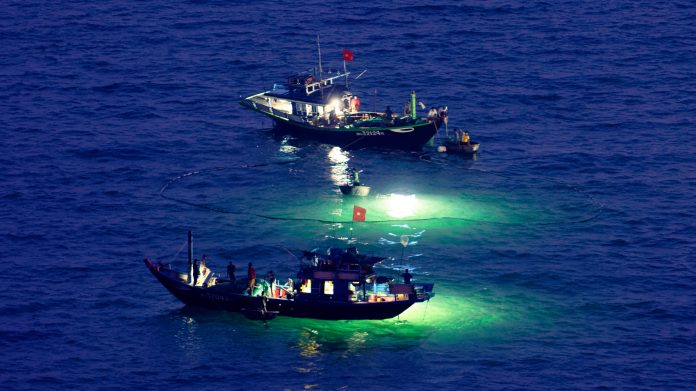Shaun White, Technical Project Manager of the Current Direct project, tells us what we need to know about how this research & innovation project will revolutionise how we move goods & people by water
Current Direct, is a project funded under the European Commission’s Horizon 2020 initiative to greatly accelerate market adoption of clean sustainable energy in the maritime industry.
Introduction
Waterborne transportation is essential to move goods and people around the world and a vital element of global trade, driving economic growth. Despite many years of progress, the waterborne transport industry remains an important source of greenhouse gas emissions and other harmful pollutant emissions to water and air. Today, 13.5% of all GHG emissions in the EU transport sector can be attributed to waterborne transport, which itself accounts for about 2.5% of global greenhouse gas emissions.
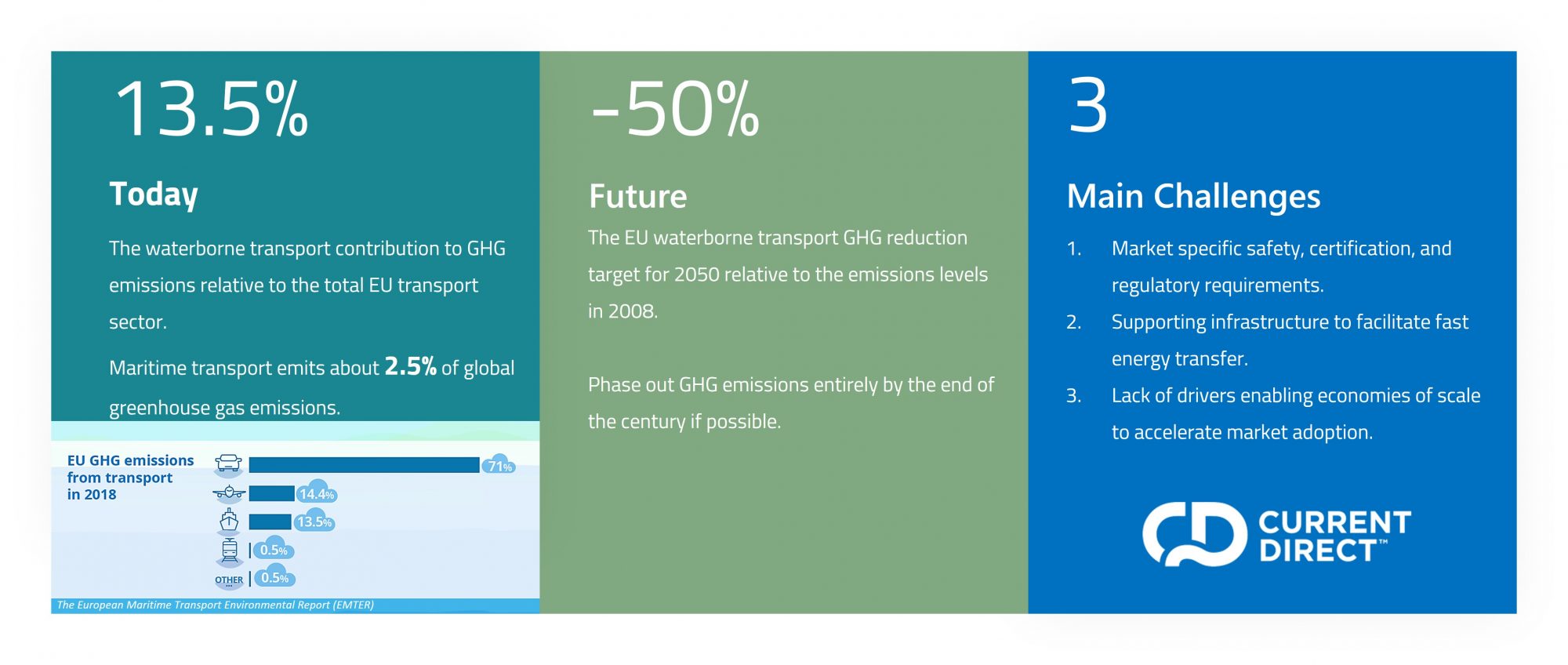
Continued action to reduce the environmental impact is needed for the maritime sector to play its part in turning Europe into a climate-neutral continent achieving the EU goal of a 50% reduction of emissions by 2050, with the long-term goal of phasing out GHG emissions entirely by the end of the century.
Across the maritime industry, there is agreement that shipping must undergo a rapid energy transition over the current decade to prepare for and start on the decarbonisation pathway.
Current direct solution
Current Direct will revolutionise waterborne transport by overcoming the main challenges identified to achieve future EU targets by developing and demonstrating an innovative, interchangeable waterborne transport battery system and Energy-as-a-service (EaaS) platform optimised for cost and operation.
The Current Direct project will speed up the transition of inland waterways and coastal shipping towards zero-emissions by proposing an innovative lithium-ion cell optimised for waterborne transport, using novel manufacturing techniques allowing for consistent cost reduction compared to the current market prices. A swappable containerised energy storage system optimised for cost and operation in the waterborne transport industry will be developed to deliver this innovative cell technology to the user.
A standardised shore infrastructure for supporting operational use in the port will also be implemented. Current Direct will optimise these innovations with the developments of an EaaS platform and related financial models, which will reduce the barrier to entry and increase market adoption. Finally, a standard battery certification methodology to validate and verify safety is also proposed.
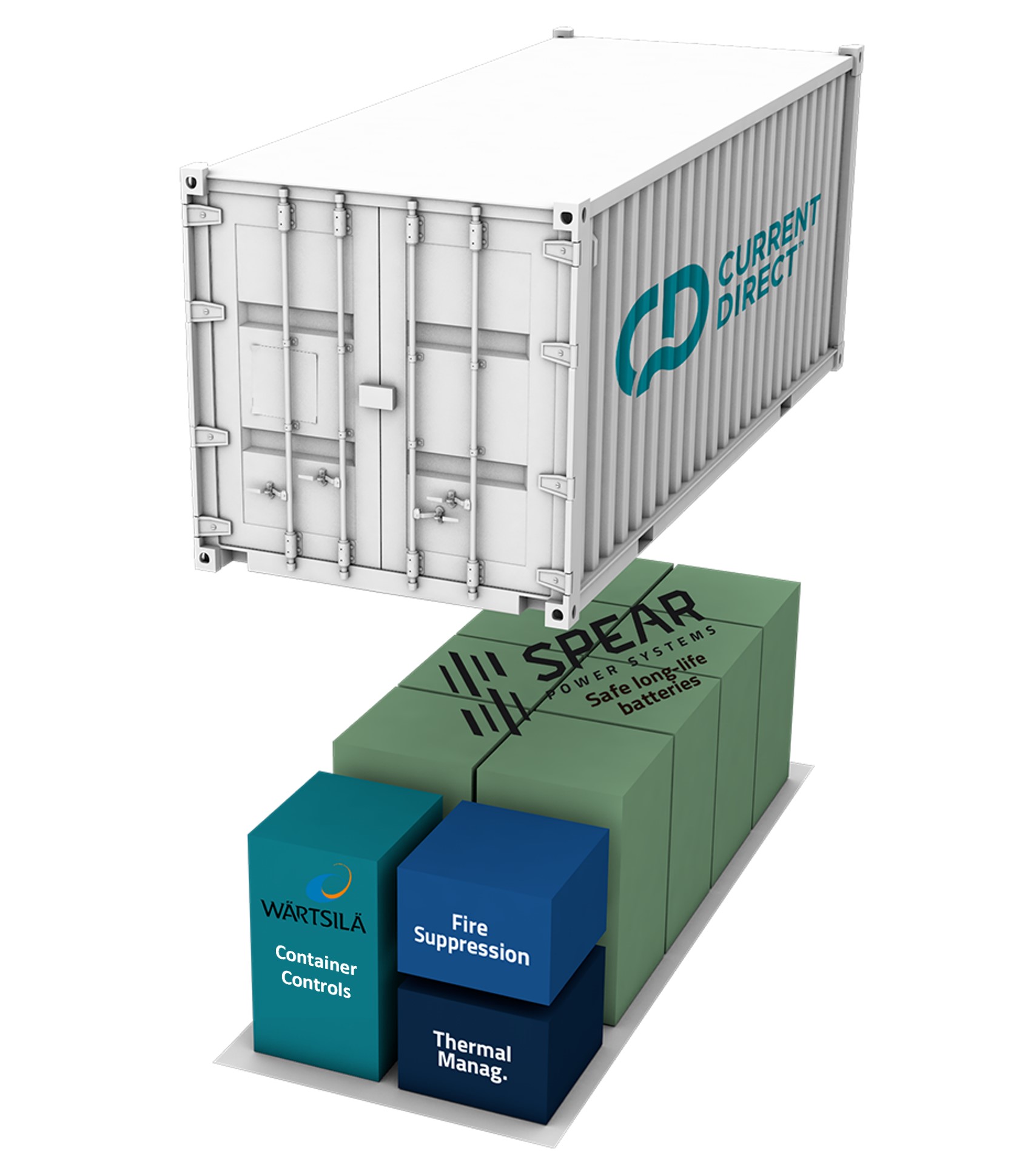
This means that when an electric vessel arrives at a container swapping station, instead of connecting to a shore charging infrastructure, the battery swapping operation swaps the discharged battery container with one that has been optimally charged in advance. The loaded, charged battery provides the battery-to-vessel power and energy for the onward voyage. The offloaded battery can then be charged according to the utility provider planning and price schedule. The battery swapping operation is completed within a short time that allows for the quick departure of the vessel.
After each container swapping operation, the EaaS platform calculates the service fee that is to be paid by the end-user which is assembled by a predetermined fixed fee and the specific battery-to-vessel operating costs.
Current Direct swappable battery containers will be capable of providing 1MW of power and a total installed energy of 3 MWh. This amount of swappable clean energy is sufficient to enable zero-emission operations of many applicable inland waterways and coastal shipping vessels for voyages of tens of hours over hundreds of kilometres.
The cloud-based EaaS platform will be developed, paving the way for a sustainable battery swapping business model ensuring the end-user has the clean energy needed, when they need it, at a competitive price, comparable to today’s fossil fuels. The platform will tackle the optimal charging and discharging scheduling of the batteries, manage the battery supply planning between electric vessels and swapping stations, as well as incorporating recognised practices of revenue management to provide electric vessel owners and investors with sustainable swapping services.
The Current Direct project will increase the installed energy by 300% compared to systems currently available, whilst significantly reducing the total lifetime cost of waterborne transport batteries by 50% when compared to today’s state-of-the-art waterborne battery systems.
Interfaces and topology
To facilitate the physical operation of the Current Direct project, shoreside container swapping and charging infrastructure will be developed.
A swapping infrastructure capable of supporting a diverse range of vessel types used in the inland waterway and coastal shipping applications will be strategically placed along high traffic routes and major multi-modal logistics and transport hubs.
This swapping system will be scalable by design to accommodate the growth in electrification of vessels while also supporting fast swapping and intelligent integration with the shoreside charging systems.
Vessel integration and demonstration
The shoreside charging systems will intelligently integrate with the local power grid to maximise benefits, tapping batteries enabling potential to offer Battery to Grid services, to provide grid stability for increasing renewable power production.

The battery container will also be designed to include standardisation on all electrical, mechanical, and physical interfaces between the shoreside and the vessel-side. This will be achieved by a detailed evaluation of the different target vessel types, system topologies and interfaces, along with shoreside standards and regulations.
Current Direct will collect and analyse the state-of-the-art maritime industry rules, regulations, and requirements to identify a set of standard design procedures; verification and validation activities; and testing and acceptance criteria that cover the entire scope of swappable battery container systems. The outcome of the analysis will be a new standardised certification methodology, purpose-built on the strengths of existing certifications and the outcomes from rigorous risk-based design assessments.
Timeline
The Current Direct timeline is divided into 5 major phases, where 1 and 2 have already begun, starting in January this year. Phase 1’s goal is to build a solid specification to develop design requirements. In phase 2, the components will be designed and tested against their requirements specifications to ensure compliance.
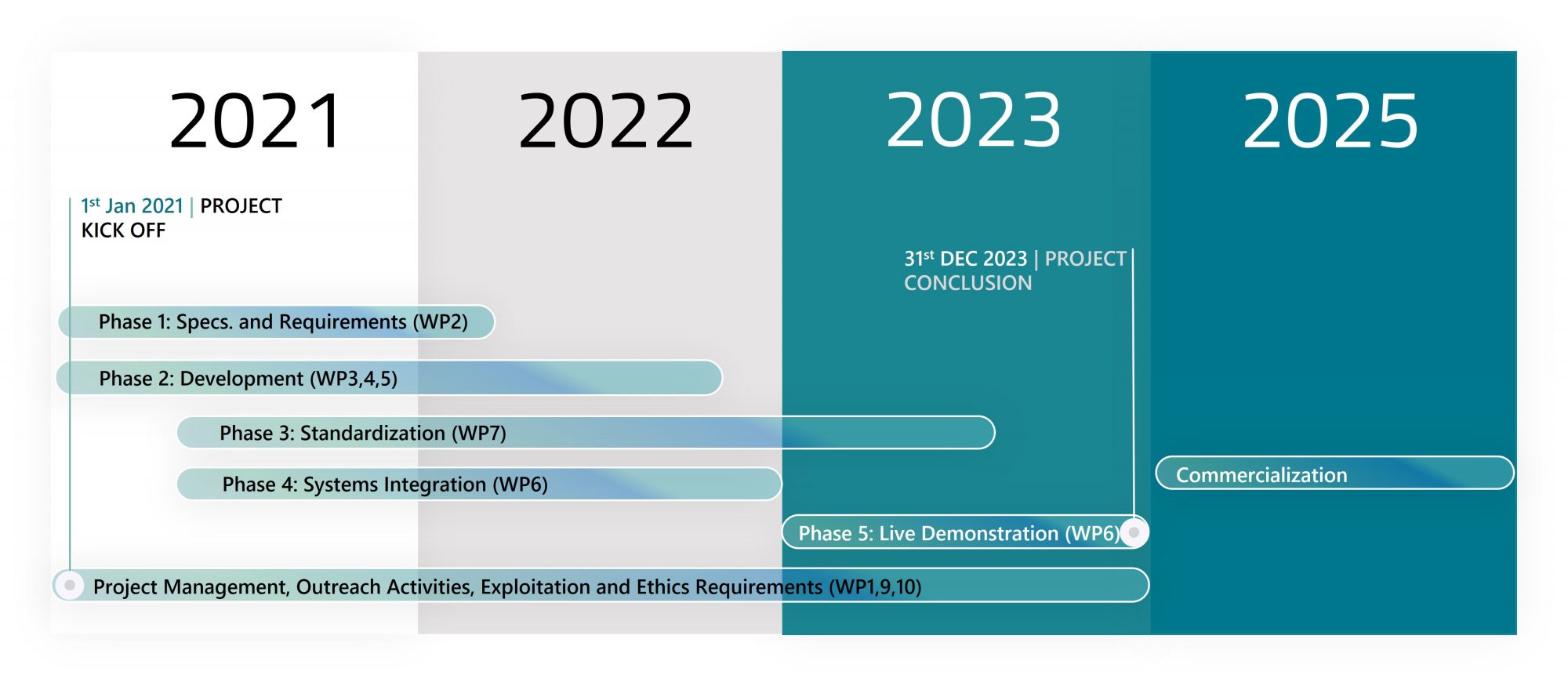
During phase 3, a comprehensive analysis into current standards will be conducted to develop the standardised certification methodology. Throughout phase 4, system integration testing will be conducted. Then in phase 5, the entire Current Direct system will be demonstrated through the duration of 2023.
Following the successful demonstration of the project, Current Direct will then enter the commercialisation phase with the target of being fully realised in 2025.
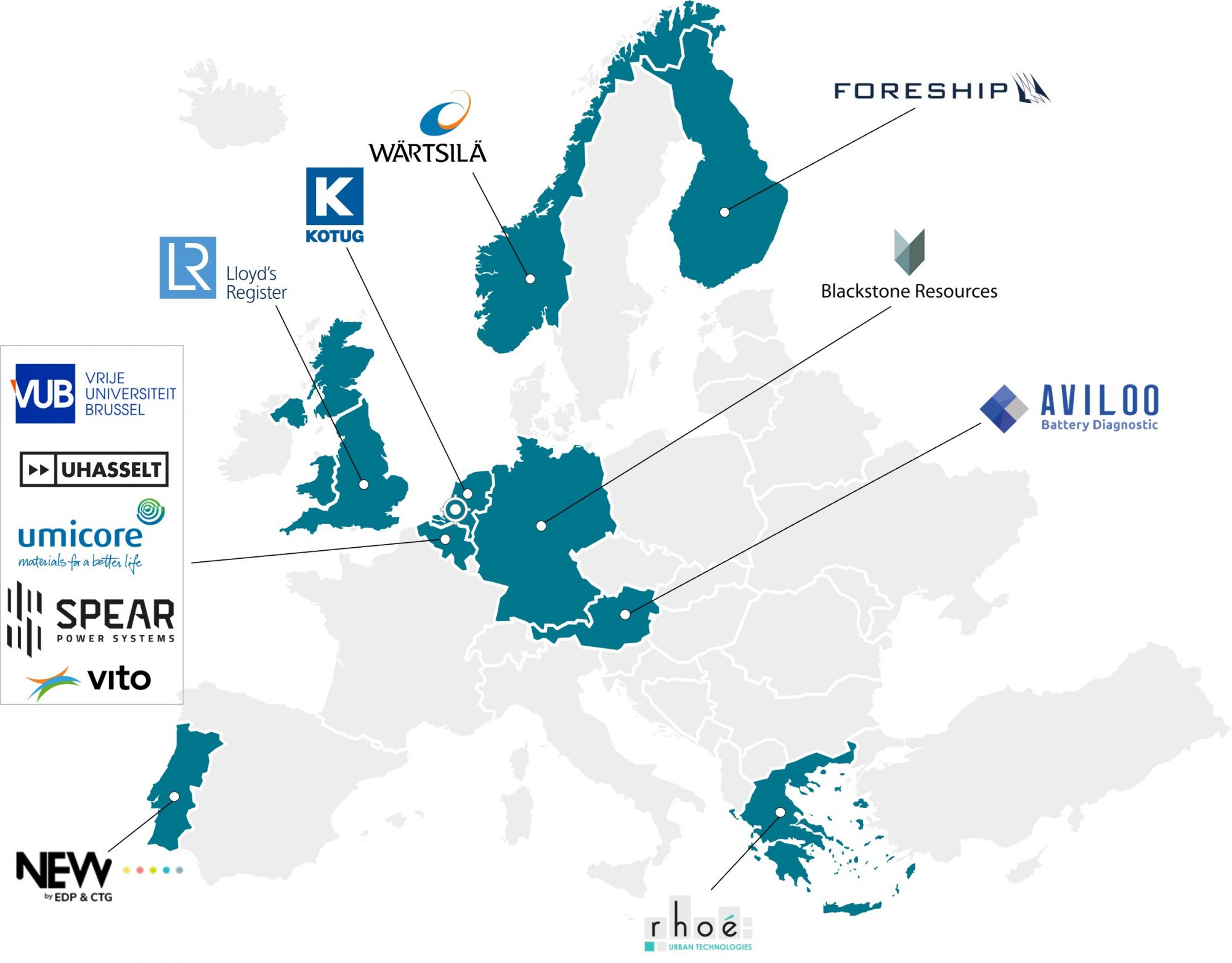
Consortium and advisory board
The Current Direct Consortium and advisory board have been carefully selected to develop and demonstrate the innovative technologies and business models.
The diverse Consortium incorporates 13 experienced and highly skilled organisations from nine different countries. These organisations provide expertise and experience in their specialist fields, especially concerning best-in-class in the maritime industry and battery manufacturing sector.
Additionally, members of the advisory board, including Carnival Corporation, the Port of Rotterdam, Vattenfall, ENGIE, Sogestran Group and the IVR Association all have a direct interest in the success of the project and will help steer the project towards maximum exploitation and commercialisation.
Conclusion
Current Direct will revolutionise the waterborne transport industry to create a clean energy ecosystem for the benefit of Europe and the globe. Substantially reducing the cost of today’s energy storage systems to be at cost parity with diesel fuel while simultaneously increasing performance and market confidence will considerably accelerate market adoption of zero-emission technology.
The implementation of Current Direct will create new jobs and a knowledge base, enhancing Europe’s innovation capacity and competitiveness in the rapidly growing energy storage industry. The project would welcome discussions with end-users, vessel owners & operators, shipyards and potential investors, who would like to be part of the electric revolution for inland waterway and coastal shipping.
www.linkedin.com/company/currentdirect
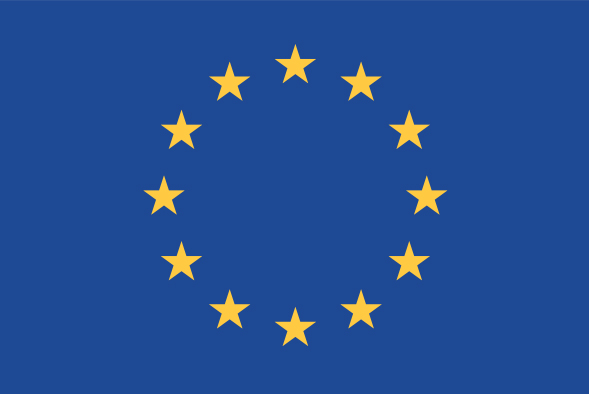
CURRENT DIRECT – Swappable Container Waterborne Transport Battery has received funding from the European Union’s HORIZON 2020 Research programme under the Grant Agreement no. 963603.
Please note: This is a commercial profile

